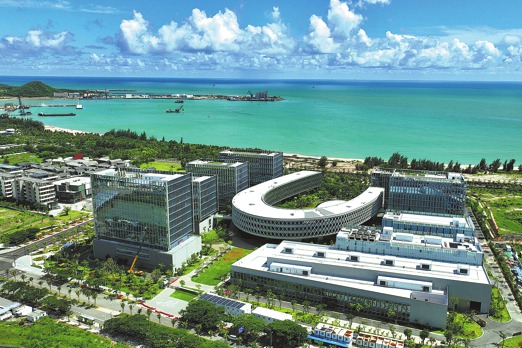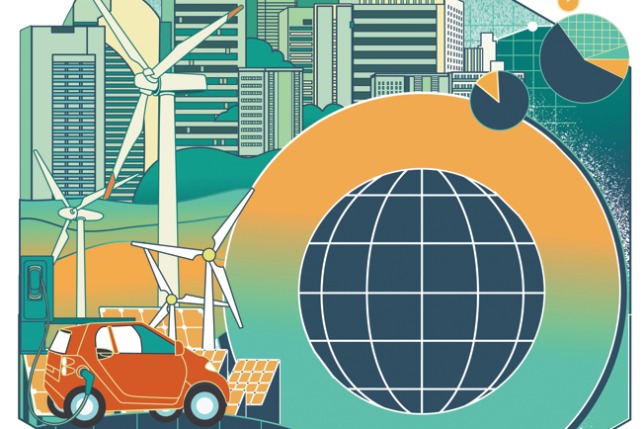Counting the cost


Natural capital accounting can spur action to safeguard the benefits nature provides us
World Environment Day is a poignant moment every year to take stock of the nature crisis and its place on the global agenda.
That we live in turbulent times is well documented. A range of global crises occupy our attention and demand action every day, from geopolitical upheaval and growing polarization to cost-of-living crises.
Global crises are visible, urgent, and easily understood, with measurable impacts. For example, cost-of-living pressures are acutely felt when prices rise faster than wages.
By contrast, nature loss receives far less attention. It doesn't typically feature at headline multilateral events such as the G20 or the UN General Assembly, and in national conversations on growth and trade. It is usually discussed at intergovernmental forums to address environmental crises, but even then, climate change and biodiversity loss are addressed at separate summits. The climate COP process generally receives greater attention and funding, according to many international experts. The Kunming-Montreal Global Biodiversity Framework, signed by 196 countries in December 2022 at UNCBD COP15, was heralded as the "Paris Agreement" for biodiversity, but hasn't quite received the ubiquitous international coverage that the climate agreement has received since 2015.
But why? Nature loss threatens over half of the global GDP. Billions of people suffer the increasingly devastating effects of nature loss every day, including those in agricultural communities, overheating cities, indigenous lands, and on vulnerable coastlines. By all accounts, climate change and nature loss are deeply connected, sharing common drivers — but decarbonization alone will not solve both challenges.
The challenge is that, despite nature loss being visible, it is not visible everywhere. Tropical forests, glaciers, and the ocean — major theaters of global nature loss — can feel far removed. Its impact is immediate — but often it isn't framed with urgency. In fact, experts across the international community view nature loss as a 10-year risk, generally agreeing that technology changes, economic uncertainty, and conflicts are more pressing issues. It's also measurable, but hard to understand how it impacts well-being and business. What should a department head or senior executive make of data on dwindling forest cover or declining fish stocks?
The good news? The ever-evolving "natural capital" approach can help address these challenges.
The natural capital approach extends the notion of capital to the environment, conceptualizing nature as assets worth restoring, maintaining, and enhancing for productive value. Think of "stocks "of natural resources — land, watersheds, forest cover, soils, various species — providing productive "flows" of ecosystem services such as food, fiber, protection from extreme weather, and cultural value, to name just a few. Many of these essential benefits are not captured in economic indicators such as GDP or in financial statements.
Natural capital accounting essentially is the process of recording changes in specific natural assets or resources over time, and by extension, the benefits nature provides us. Valuation takes this one step further and converts physical environmental accounts and flows of benefits to decision-relevant metrics, including monetary terms. Together, accounting and valuation can give us a clearer picture of nature's benefits today and their future value.
Such critical data can make decisions on nature far more accessible for policymakers and business leaders alike. If deployed at scale, it can help make the nature crisis and the need for action more evident.
First, nature loss can be made visible by translating it into actionable statistics. On a national or global scale, a balance sheet for nature may help evaluate trade-offs between nature and growth better. Natural capital per person — our global stock of natural resources — has declined by 40 percent from 1992 to 2014 (while GDP per capita more than doubled).
Second, if governments and businesses have to take immediate actions on disclosed accounting data, it would transform decision-making. To illustrate, Olam's Sunny Verghese in 2022 described Temasek's internal carbon price on its portfolio companies as crucial to making emissions reduction his "number one priority as CEO", as it affected half of their after-tax profits.
Third, the issue becomes understandable by consolidating data on various forms of nature loss and providing simple (even monetary) metrics to gauge performance. The worldwide degradation of land alone costs us up to $10.6 trillion annually (around 17 percent of the global GDP in the year of valuation).
Natural capital accounting has gained traction among policymakers, business leaders, accountants, economists, civil society and academia alike. Many global initiatives now seek to increase the adoption of the natural capital approach.
Gross Ecosystem Product (GEP) is a standout example of this momentum. GEP, first developed in China in 2012, is among the leading tools available for governments at all levels to measure their ecological performance.
GEP is analogous to GDP. It uses market prices and economic techniques to calculate the value that ecosystems provide to the economy each year, including production value (eg, agricultural produce), regulating services (eg, climate resilience), and cultural services (eg, scientific value). GEP can support environmental policymaking, form the basis for investments in conservation and restoration, and help measure local officials' performance.
As of 2023, 17 provincial governments and 50 cities in China had issued guidelines to use GEP.Around 200 pilots have been launched, including in Guizhou province, Shenzhen in Guangdong province and Qinghai province. As an example, a nature reserve in Deqing, Zhejiang province, had its GEP valued at 311 million yuan ($43 million) in 2021 — and analysis based on this indicator directly influenced the choice of renewable energy projects approved in the reserve.
Encouragingly, the CPC Central Committee and the State Council issued guiding opinions on establishing the mechanism of realizing the values of GEP in 2021. Accounting standards for GEP were released in 2022 by the National Development and Reform Commission (NDRC) in coordination with the National Bureau of Statistics (NBS). GEP pilots have or will soon be commissioned in countries such as India, Colombia, Sri Lanka and Sweden.
While not new, natural capital approaches are still not mainstream. Stakeholders across the global economy have an important role in elevating natural capital:
First, governments can begin exploring deploying natural capital accounting and valuation, aligning this with national and local development plans and biodiversity strategies, and evaluating the feasibility of requiring large businesses to use natural capital standards. Second, academics and standards bodies can work toward greater harmonization between competing standards and making methodologies more accessible for businesses. Third, corporates can begin evaluating their impacts and dependencies on nature via available standards, and prepare to adopt natural capital strategies. Fourth, international organizations enable multi-stakeholder collaboration to deepen the adoption of natural capital approaches.
The author is lead of Financing for Nature at the World Economic Forum. The author contributed this article to China Watch, a think tank powered by China Daily. The views do not necessarily reflect those of China Daily.
Contact the editor at editor@chinawatch.cn.


































